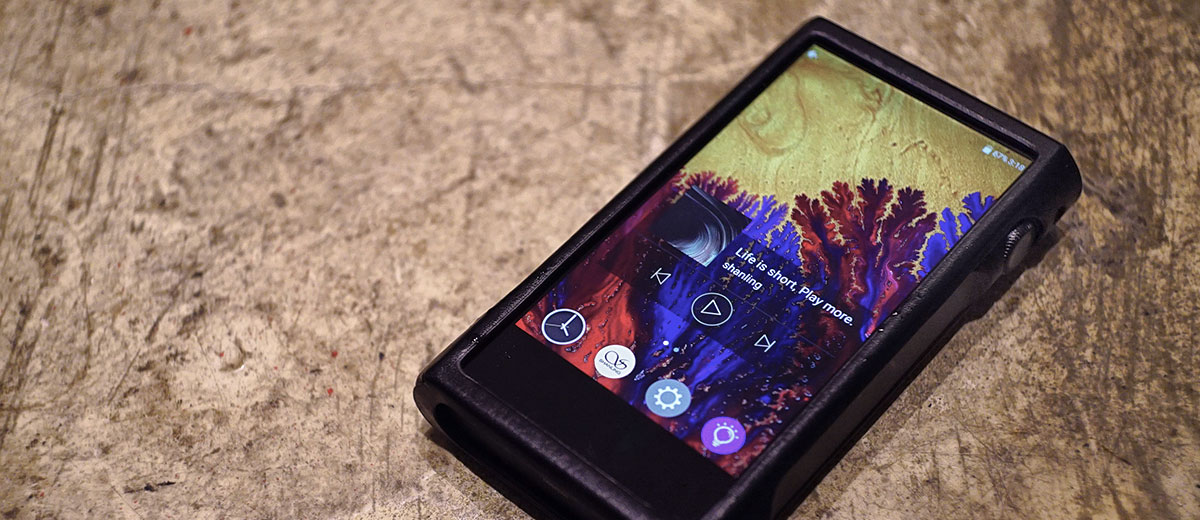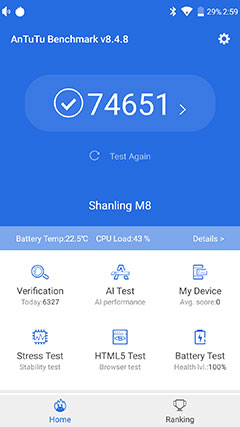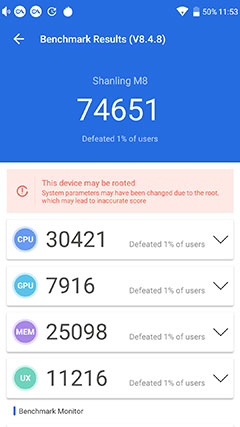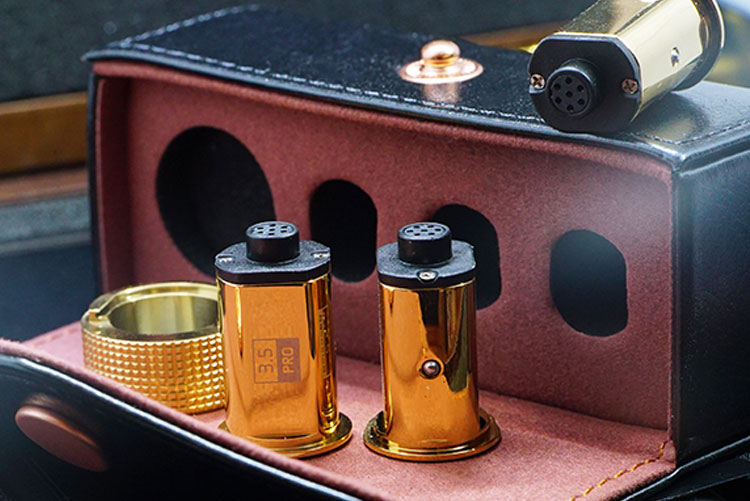M8 Software
Android & AGLO
To bypass Android limitations and not degrade or downsample data rates the M8 uses Shanling’s proprietary AGLO (Android Global Lossless Output) technology supporting up to 32bit/768 kHz sampling.
Customizing the Android system down to the root level ensures there is no unnecessary digital conversion that alters and degrades the sound signal before it reaches the decoder. You can also switch to the PRIME mode which force terminates other apps in the background ensuring the least interference when using the music app.
The platform-wide bit-perfect output capability is offered on other high-end machines and I do find it necessary if you want to enjoy the best output with other apps rather than the manufacturer’s own music player app.
The M8 runs on an open Android system but there is quite a lot of customization on sound-related features such as 6 different digital filtering modes and a 10-band equalizing option.
So far, I found the system to be mature and stable with a relatively friendly and familiar user experience when using the M8 OS. You can see a lot of fine customization like the drop-down menu icons making the navigation handier than the original Android interface.
Performance Measurements
Running AnTuTu 3D tests the M8 scores 74651 which is slightly higher than that of the M6 Pro which scored 70755 but a bit lower than the FiiO M15 which scored over 100k in our tests.
After playing with the M8 for more than a week I can confirm the UI experience is similar to the M6 Pro which is smooth and fast enough for most daily operations.
There is no accelerometer or other sensors for gaming but it is able to handle most simple games such as Zuma and Angry Birds. The screen is very sharp and vivid in color, and the larger screen size is exactly right for some 1080p Movies.
There are faster processors with higher ram speed adapted in other DAPs such as the M15 and the R8 right now that operate almost like a phone but the M8 is fast enough to handle everything I need. Certainly, a huge step in speed from older DAPs.
Navigation & Drop-down Menu
The M8 navigation is as simple and familiar as any other Android device. On default settings, the bottom bar is hidden so you will need to use swipe actions to exit the current app and call other functions.
The drop-down menu is customized so you can access different options without going into the settings. Aside from the common Wi-Fi/Bluetooth switches you can change the Gain, take screenshots, jump to audio settings, and switch instantly to Prime Mode.
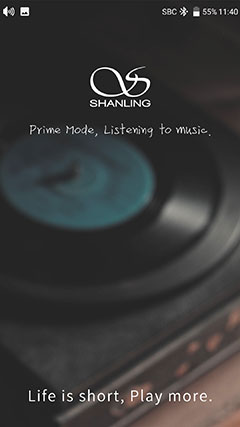
Boot Up
Small details make the whole experience more premium. When you switch on the M8, Shanling’s logo will pop up and a startup animation will be played. It is finer than the one we see on M6 Pro and I really like how Shanling cares about the details.
Similar to the M6 Pro, the M8 takes around 20 seconds to reach the unlock screen and the system is ready to play music right away with no extra caching lag and warm-up needed.
Shanling M8 Sound Impressions
Summary
Shanling has tuned the M8 with the aim of achieving a sound signature which they describe as a “fine piece of jade”.
Not just that it is a gemstone, but it also symbolizes warmth, a gentle texture, and a state of serenity. While the AK4499EQ DAC chip empowers the M8 with top-notch detail retrieval capability the amp inside will also help to deliver excellent dynamic range, and clarity you will still find Shanling’s house tuning inside, in particular, the full-bodied vocal and textured juicy bass.
With a dual AK4499EQ and a powerful amp, I am expecting a lot of resolution and a silent background. This is confirmed even when switching to higher gain with extremely sensitive IEMs like the HUM pristine or the Shure SE846.
The dynamic range is very wide and a lot of detail across the frequencies is preserved, letting you hear impactful bass while not dulling down on higher frequency air or resolution. The bass touches really deep and responds in an articulate manner with a fast impact response on sounds like Transformer BGM/ SFX which comes across as very authentic and full bodied at the same time.
Timbre
Having listened to quite some AK4499EQ based DAPs most are trying to achieve a very high-fidelity presentation, leaning to the clean side. This type of tuning shifts my focus to the top-end including vocal and fast percussion instruments.
While quite some high-end IEMs are trying to achieve more clarity, the cleaner sounding AK4499EQ devices may pair better with dynamic IEMs or bassier IEMs.
The M8 is noticeably different in this respect, offering more vocal presence and warmth as well as enhanced mid-bass density while preserving the excellent detail in its treble response. This means the M8 sounds fuller in the lower register especially when listening outdoors, where some vocal presence is pressed down by ambient or background noise.
With headphones, it will be more obvious for M8 to sound airy and powered in the bass, and it will sound less thin or sibilant when playing classical tunes that need the bass energy.
“Jade-Like”
Spending more time putting more IEMs with the M8 you can hear why Shanling described their tuning as “Jade-like”.
Nothing is aggressive in M8’s tuning while it is responsive and controlled, which gives it the ability to paint the whole canvas instead of focusing on the character only. This allows it to sound more realistic with classical music recordings that have a larger ensemble, and to let you discover microdetails while not pushing selected frequencies to forward.
On M8 most IEMs enjoy a calm, controlled but expressive presentation that is highly polished, smooth, and subtly warm, much like the emerald-colored gemstone that may not steal your attention at first glance but will slowly grow on you.
The dense mid-bass with high resolution and instrument separation is the house sound for Shanling. It recalls some of my memories with the RME ADI 2-PRO, which displays tons of resolution and texture in the bass while rendering the vocal slightly sweet and very full-bodied.
Listening to some slow drumming, old jazz live recordings you get some excellent texture and impressively detailed bass decay that you can trace while it dissolves in midair.
Compared to M6 Pro Timbre
Compared to the M6 Pro you will feel the M8 is more controlled and refined, polished in the mids, and sounds more realistic, expanded, effortless with instruments. The vocal is less exciting and cleanly outlined as on the M6 Pro. The edges are more rounded, less intimate leaving more space for other instruments to fill in.
You can hear the virtuoso placed more far off in a grand stage and not stealing the show, instead, every instrument has equal weight, and they paint the whole picture together.
Compared to M6 Timbre
The earlier released M6 has a warm and gentle mid-bass tuning and the M8 fuses the lush, engaging character of it while stepping up from M6 Pro’s technical capabilities. If you compare the sound of the 3 side by side the M8 sounds a lot more complete and rounded, capable in reproducing the full spectrum with fullness and detail at ease.
On a side note, the way it treats the upper vocal range has a small resemblance to the Sony WM1 series, where the speed and the way the female voices are rounded have a familiar feeling.
This helps the M8 to cope with brighter content and sounds exceptionally smooth with light, sharper voices. Excellent control helps handle classical music, especially larger ensembles very well and paces everything at the right speed.
While enjoying the vibrance in woodwinds and smaller string instruments it never gets hot, even with a bright IEMs the M8 can still handle the hottest part of the music effortlessly without letting the 4-6k range pierce through.
If you want the upper vocal to be more descriptive you can switch on the high gain mode that will highlight the upper mids and brighten up the picture a bit more.
Staging
Out of the box, the M8 sounds very expanded but the mids are a little bit messy so I gave it some time to run in.
After more than 20 charging cycles it is cleared up and the staging is very spacious, noticeably more opened up than with its predecessors the M6 Pro. The vocal is slightly pushed back, and instruments have better separation to offer a very wide stage with much more depth than the M6 Pro. The linear performance makes staging natural and realistic.
The decoding and amping quality are good enough for you to hear the height of instruments more clearly also the decay of bass into space. There are a lot of details preserved in the lower mids range, everything seems tidily in phase, ordered and gentle. That will throw you in the music quickly, being immersive and engaging without any fatigue for long listening.
Digital filters
I am mainly listening with the default digital filter on 4.4 balanced output, with PRIME mode switched on to eliminate interference from other apps and to maximize output quality.
When you use other apps, you may notice changes in sound signature, for example, my Onkyo App offers a more rounded output. You can experience 6 different filters and digital gain options to give the vocal a bit more sparkle or press sibilance down even further with the lowest gain.
Wireless Performance
WiFi
Streaming has become a part of my life and work and DAPs rely on Wi-Fi strength for stable browsing and playback.
Putting the leather case on the M8 I get a good signal over Wi-Fi in my room through 2 concrete walls. It picks up as much signal as my phone and scores similar speed to my iPhone when checking with online speed tests.
I have been streaming on YouTube/Spotify a lot and there have been no issues or lagging unless I bottleneck it myself downloading something else on my laptop. So far, the connection is very stable.
Bluetooth
Bluetooth connectivity is awesome on the M8 With CSR8675 under the hood, the signal strength is excellent. I enjoy using the M8 as a streaming device quite a lot. During the FiiO BTA30 test, I streamed from the M8 with LDAC selected and the signal is stable preserving a lot of details.
The streaming quality from M8 is very high and you can enjoy the best out of your TWS or make it your home streamer for the living room set up so that you don’t need to manage multiple sources/ libraries.
With LDAC it is getting hard to tell the difference between wireless signal and hard-wired sources nowadays and will be the preferred codec. The signal is stable within the living room on an LDAC connection and if you need a longer range, other codecs may be preferred. A receiver with a stronger antenna will be helpful as well.
Wired Performance
USB-DAC
I am used to connecting my players to the laptop at work to maximize its utility. M8 supports decoding right up to DSD512 and CPM 32BIT/78kHz. If you want to listen to your music on your PC library you could just plug in the M8 and play, then decide what you want to drag into the player.
You will need to download the USB driver for optimal setup on Windows and you can visit here for the drivers. For MAC and Linux connections the setup is driver-free and it works fine with players such as Amarra/Audirvana.
USB OTG
The M8 supports USB OTG so you can transport files from an external drive, which also means you could copy songs from another TF card with a card reader.
Supporting USB OTG also means that you could hook up to other DACs and get a signal out of the M8’s USB-C port, for example connecting the M8 as a digital turntable to the Hifiman HM1000. You can also hook up other devices such as the Lotoo Paw S1 and the M8 supports hardware volume control.
Click on page 3 below for Synergy, pairings, and comparisons

